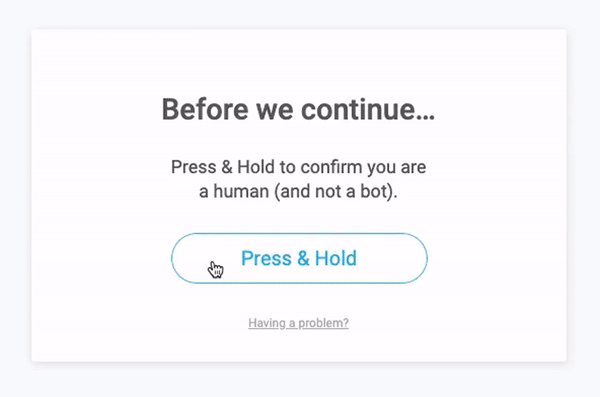The above are not the only way to verify the humanity of a website visitor. Unique alternatives include:
1. Human Challenge
The Human Challenge is a simple and sophisticated way to prevent malicious bot behavior and an all-in-one CAPTCHA alternative. It does most of its work in the background, which means that most users won’t even interact with it, leading to a truly frictionless and fast experience.
If Human Challenge displays to a user (approximately 1 in 10,000), all they have to do is press and hold a button while HUMAN executes proof-of-work behind the scenes. The end result is a solve time that is 4-6 times faster than traditional methods and a page abandonment rate that is 3-5 times lower.
When a user hits your page’s edge, Human Challenge makes a “bot-or-not” decision. This gets trusted users recognized instantly and gives them a fast browsing experience.

2. Biometric Verification
Biometric verification is a security layer that removes the need for verification altogether. It also replaces the use of passwords and other codes with biological measurements, like fingerprints and facial or voice recognition.
The downside is you can’t enforce biometric verification. You can suggest it and encourage users to choose it, but the rest is up to them. Plus, in some instances, like filling out a form, biometrics don’t always have their place, as users don’t have to be logged in.
3. Precheck
Precheck from HUMAN makes a bot or not decision just as a users’ first request reaches the edge of the page. The indication that the user receives is displayed in the form of a brief splash page that features a (customizable) animation.
Because Precheck blocks at the first request, it is extremely good at detecting web scrapers, a task that is otherwise tedious as it takes only one single request for bots to scrape content.